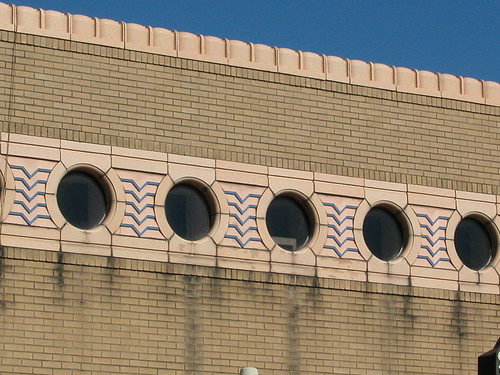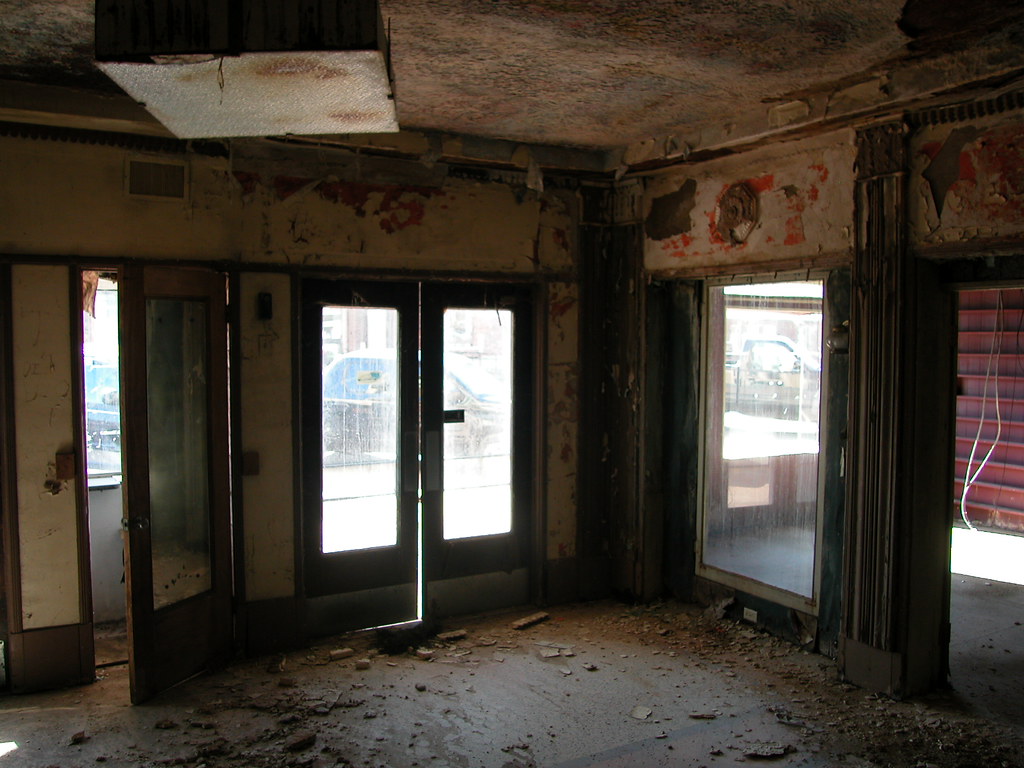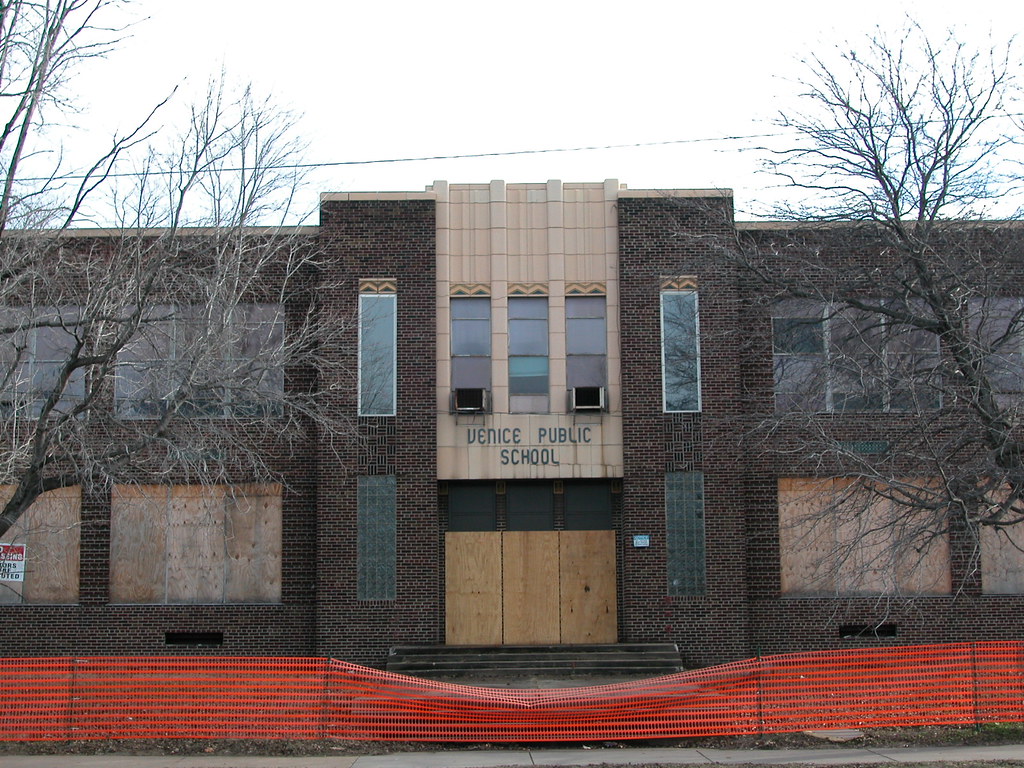by Michael R. Allen

The charming art deco Massac Theater graces Main Street in Metropolis, Illinois, a small town at the southern tip of Illinois well-known for DC Comics’ designation of the town as “Hometown of Superman” in 1972. Although the front elevation appears well-maintained, the theater has been completely abandoned since the late 1980s, when a radio station using the front section of the building moved out. The theater screened its last film, Superman, in 1978.

The Massac Theater opened in 1938 with 537 seats, a large size for a town the size of Metropolis. The front and side elevations were laid in buff brick; polychrome cream and blue terra cotta disrupt the front elevation with vertical finial-topped piers to each side of the entrance joined a ribbon of portal windows. A jazzy marquee, still intact, further enhances the exterior. Entrances on each side of a box office lead to a low-ceilinged front lobby which expands into a larger lobby space. Although the partition between the lobby and the auditorium is now gone, twin staircases with fine metal rail detailing, probably leading to a missing balcony, indicate some sort of atrium in the lobby. Past the staircases is the bow-trussed auditorium, now cordoned off with a plywood wall.
Here is a view of the lobby.

The view below looks toward the front entrance from inside of the theater. Note the staircases.

The auditorium is shocking — the walls are stripped down to backing block, the seats and flooring missing, and the roof is largely collapsed. Weather-beaten sections of roof deck cover the floor of the auditorium.

Condemned by the city government, the theater sits forlorn. The radio station left behind myriad record, files, desks and other furnishings. No one knows what the future will bring here. Metropolis has not had a movie theater since the Massac closed, but with access to nearby Paducah and its multiplex theater on sprawling Hinkleville Road, the demand for reopening a single-screen downtown movie theater is low. Most of the entertainment in Metropolis nowadays takes place at the giant Harrah’s casino that blocks the downtown area from its riverfront on the Ohio River.










